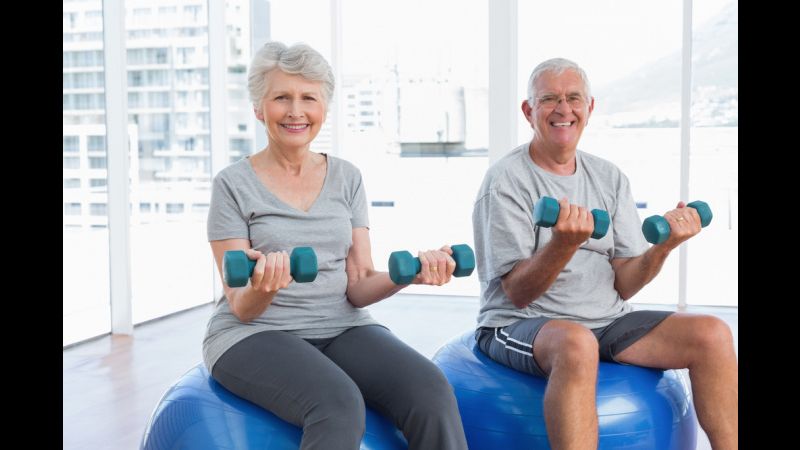We’re learning more all the time about the long-term benefits of maintaining a healthy exercise regimen as you age. Research tells us that those who engage in regular physical activity and strength-training are substantially more likely to enjoy mobility, independence and positive health outcomes later into life than are their sedentary contemporaries.
In spite of this growing body of knowledge, however, Medical Xpress reports that less than a quarter of all adults over the age of 45 are meeting muscle-strengthening recommendations established by the Department of Health and Human Services. These findings suggest some foreboding realities for aging Baby Boomers. That’s because the longer you wait to get into shape, the harder it will be to get started.
Sedentary Seniors
According to researchers, the 2011 U.S. Behavioral Risk Factor Surveillance System conducted a telephone health survey in which participants were asked about the level and frequency of physical activity, including muscle-strengthening exercises. Survey respondents revealed a startlingly widespread shortfall in these key fitness areas.
Researchers determined that only 24% of respondents appeared to meet Department of Health and Human Services recommendations. The findings also showed that certain groups are distinctly less likely to meet strength-training minimums. Among them, women, widows, seniors over the age of 85, those who are obese, Hispanic populations and non-high school graduates are all at an elevated risk for a sedentary lifestyle.
Your Weekly Recommended Dose of Muscle
The Centers for Disease Control and Prevention (CDC) refer to the 2008 Physical Activity Guidelines for Americans in noting that every adult should engage in at least 2 hours and 30 minutes of “moderate-intensity aerobic activity” on a weekly basis.
For those who are inclined toward more vigorous aerobic activity, researchers say 1 hour and 15 minutes of jogging or running is roughly the equivalent. The CDC also recommends supplementing your aerobic routine with 2 or more days a week in which you work all major muscle groups, including legs, hips, back, abdomen, chest, shoulders and arms.
The CDC also points out that your approach can and will vary depending on your abilities and limitations. Breaking your week’s worth of exercises into 10 minute activities is perfectly acceptable if it helps you stay on your routine. Alternately, the more time you put into your exercise, the better your results will be.
Starting Your Routine
It doesn’t necessarily matter what you do so long as you do it with consistency and dedication. You need to find a way to incorporate both aerobic exercise and muscle-strengthening into your weekly schedule. Even low-impact exercise can bring you up to speed with the government’s recommendations.
For moderate-intensity aerobic exercise, the National Health Service recommends activities like brisk walking, water aerobics, ballroom or line dancing, bike-riding on flat terrain or even mowing the lawn. Muscle-strengthening can include exercises such as yoga, core stretching, weight-lifting and resistance-band training.
Find the activities, rigor and schedule that work best for you and don’t be afraid to ask your doctor, physical therapist or even a close friend or relation for help.
The only thing you really need to get started, though, is commitment!

